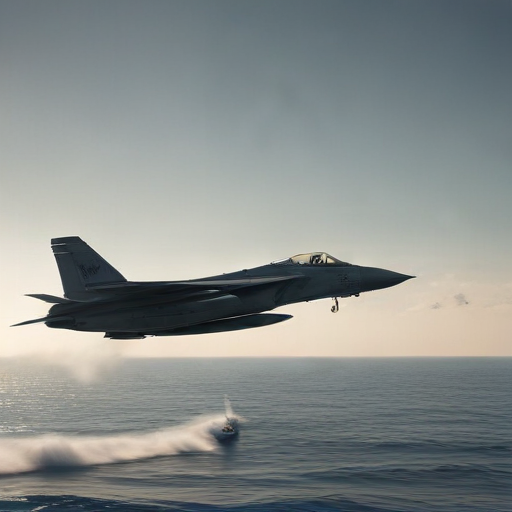In a serious incident over the Red Sea, two U.S. Navy pilots were shot down on Sunday, with the U.S. military attributing the event to a case of “friendly fire.” Fortunately, both pilots were successfully rescued after ejecting from their aircraft, although one sustained minor injuries. This occurrence highlights the escalating dangers in the Red Sea, exacerbated by ongoing conflicts involving Yemeni Houthi rebels, who have been attacking shipping routes despite the presence of U.S. and European military forces in the area.
The shots that downed the pilots were fired from the guided-missile cruiser USS Gettysburg, which is part of the USS Harry S. Truman Carrier Strike Group. This incident raises concerns about the potential for misidentification in a combat zone where military vessels and aircraft are typically linked through radar and radio channels. Despite such systems, the speed of incoming threats, such as hostile drone and missile attacks from the Houthis, can lead to split-second decisions that result in tragic mistakes.
As airstrikes targeting the Houthis intensified in the region, the military conducted strikes in Yemen’s capital, Sanaa, aimed at crucial military installations. The Houthis have launched numerous attacks against merchant vessels since the outbreak of conflict in Gaza, claiming to focus on vessels linked to the U.S., U.K., or Israel, although many of the ships attacked have no direct ties to the conflict. The situation remains tense, as an increased U.S. military presence may provoke further retaliation from the rebels.
This incident serves as a critical reminder of the complexities and dangers faced by military personnel in conflict zones. It underscores the importance of coordination and clear communication in operations to prevent further mishaps. Moving forward, a renewed commitment to safeguarding the safety of naval forces while effectively addressing threats from hostile elements will be essential.
In this turbulent time, hope lies in diplomatic efforts to stabilize the region, potentially reducing tensions and preventing the further loss of life on all sides involved.
